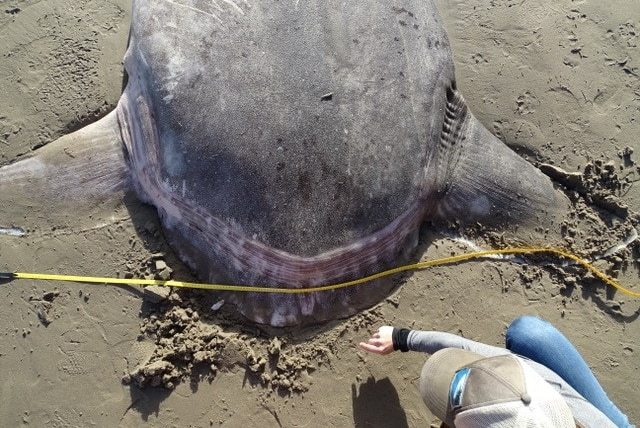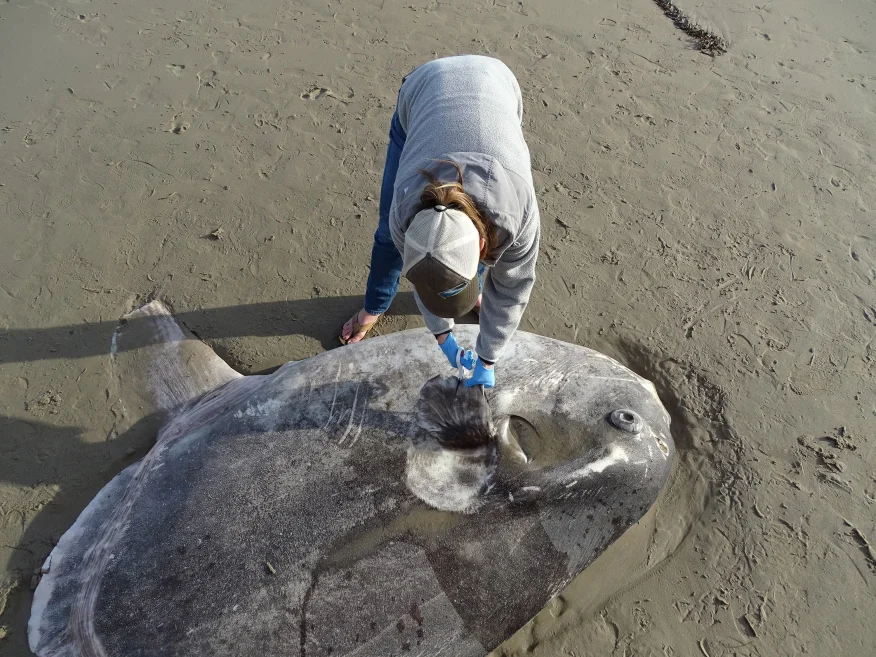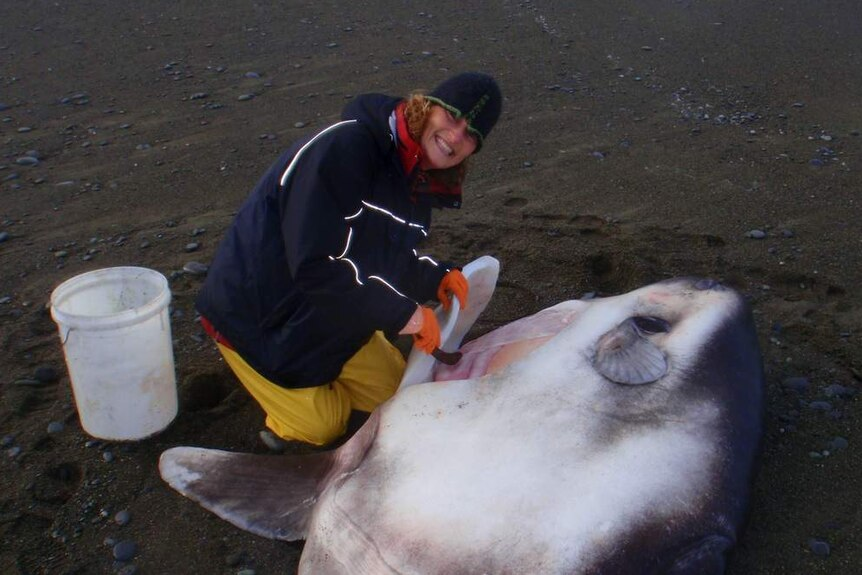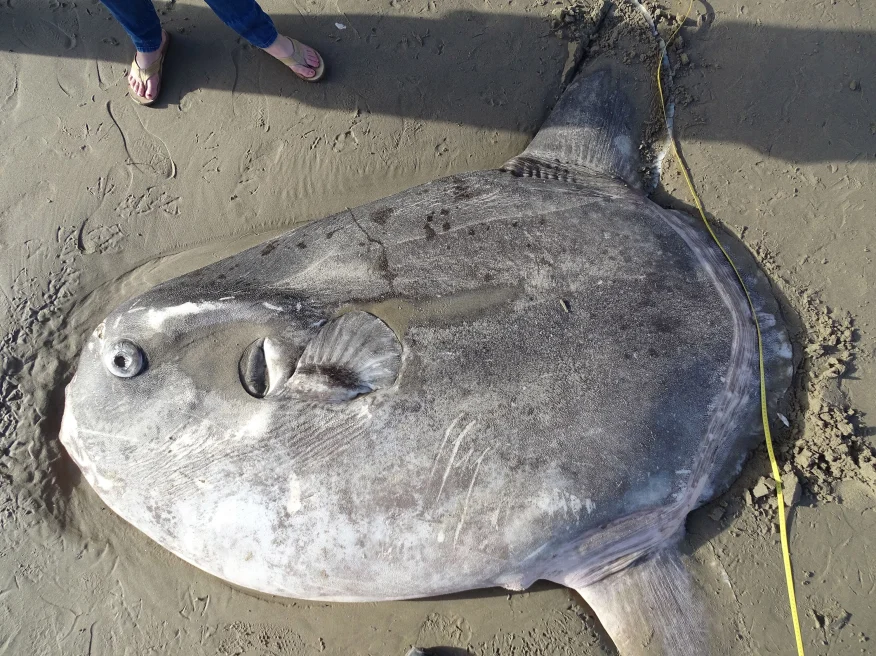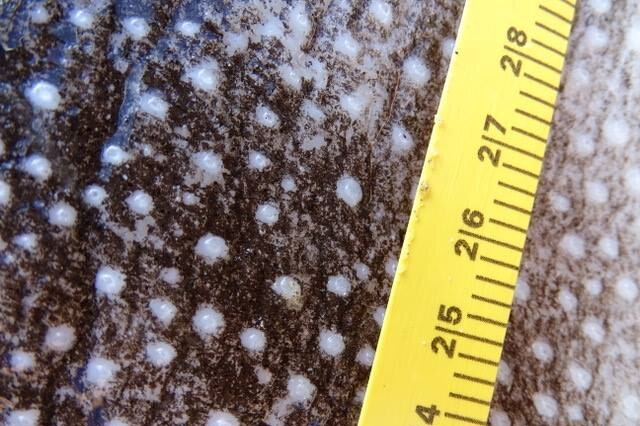A rare hoodwinker sunfish that washed ashore at a Californian beach left scientists baffled when they could not identify it.
A rare hoodwinker sunfish that washed ashore at a Californian beach left scientists baffled when they could not identify it.
An intern at the University of California had spotted the 2.1-metre fish at the Coal Oil Point Natural Reserve.
Researchers turned to social media for help to identify the creature through a series of photos posted on the Coal Oil Point Facebook page in late February.
It was there that the sunfish was identified by marine scientist Marianne Nyegaard.
Dr Nyegaard had only just begun her PhD at Murdoch University when she discovered the new species in 2014.
Observers from New Zealand and Australian fisheries would send her photos of sunfish they found out at sea.
Dr Nyegaard discovered the species after commencing her PhD in Australia.
Dr Nyegaard said she was taken aback when she heard the hoodwinker had made it all the way to California.
“When I opened my email and saw the photos of the re-examination of the fish, I just about fell off my chair — in equal measures of excitement and disbelief,” she said.
“Then I had a little laugh — so much of my life the last few years have been spent chasing this fish around, but that it should show up in California was definitely a complete surprise.”
But why the large sunfish ended up in California remains a mystery.
Dr Nyegaard said it was highly unusual as the fish normally resided in the southern hemisphere.
The hoodwinker sunfish can weigh more than two tonnes.
“Unfortunately I don’t know why or how this fish ended up in California,” she said.
“It is possible it just got lost, but it is also possible it is linked to climate change.
“However, as we only so recently described the species, [we] don’t yet fully understand its natural distribution and migrations and much more research is needed to better understand what the sighting in California means.”
Dr Nyegaard is hoping to put satellite tags on the hoodwinkers in New Zealand to better understand their movements and temperature preferences, in relation to the other species in the region.
“I am very excited to soon be able to examine the genetic relationship between the Californian hoodwinker, and the hoodwinkers off New Zealand,” she said.
Dr Nyegaard said a biopsy sample from the fish in California was being sent to her geneticist sister, Mette Nyegaard, at Aarhus University in Denmark.
“This truly is a global collaboration,” she said.
The bumphead sunfish is the world’s heaviest bony fish, with records of fish measuring more than three metres in length and weighing more than two tonnes.
Dr Nyegaard also said although the sunfish might look like a “strange, ancient dinosaur fish”, they are in fact very modern in an evolutionary sense.
They spend time between the ocean surface where they warm up, and diving to several hundred metres to feed on gelatinous zooplankton.
Hits: 0
